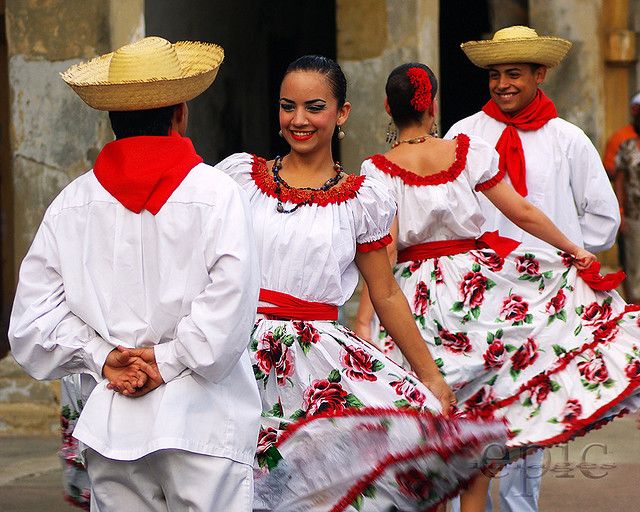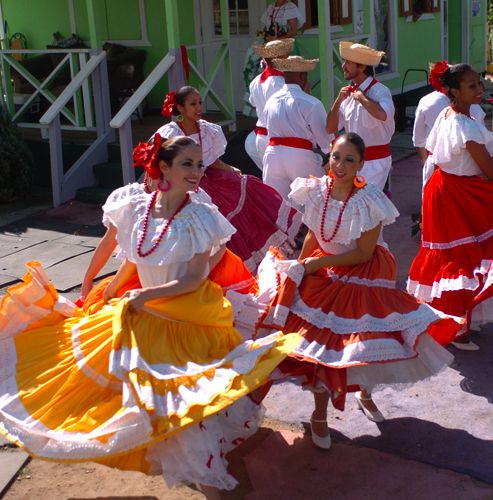Puerto rican traditions: How Many of These 7 Puerto Rico Traditions Do You Know?
How Many of These 7 Puerto Rico Traditions Do You Know?
Destguides may receive commissions from purchases made through affiliate links in this article.
© dbvirago via Canva.com
The beautiful San Juan coastline, the capital of Puerto Rico
Located just off the coast of the United States, Puerto Rico is an unincorporated territory of the United States in the Caribbean. One main island, four smaller islands, and lots of cays and islets make up the territory, with San Juan as its capital.
Many of the customs in Puerto Rico have been heavily influenced by the territory’s Spanish and African roots, which go back for hundreds of years. So…
What are some traditions in Puerto Rico? You may ask…
This list of Puerto Rico traditions covers everything from the many customs of Christmas to a coming-of-age ritual for young women and more.
Are you ready to discover Puerto Rico through its traditions and customs? Then continue reading to learn about Puerto Rico.
7 Puerto Rico traditions
7 Puerto Rican Traditions
- Traditional Christmas celebrations last around 45 days
- Girls will have an extravagant Quinceañera party when they turn 15 years old
- Calle San Sebastián Street Festival celebrates the end of the Christmas season
- The Puerto Rican Day Parade in New York City is attended by thousands of people
- January 6th is Three Kings Day
- Puerto Ricans love to clap when a plane lands
- Puerto Ricans celebrate Noche de San Juan (Saint John’s Eve)
TRADITION 1
© Sean Pavone via Canva.com
There are many Puerto Rico traditions that revolve around Christmas
Traditional Christmas celebrations last around 45 days
Puerto Ricans take their Christmas celebrations incredibly seriously. The traditional Christmas season, known as La Navidad, lasts for around 45 days on the island. Festivities begin right after Thanksgiving in November and the holiday season lasts through until mid-January.
During the Christmas season, Puerto Ricans have many famous traditions that they complete each year. One of the most popular is taking part in Parranda, which is their version of a Christmas Carol.
Family and friends will gather in front of a home after 10 pm to sing together, which will lead to neighbors joining and sharing drinks between families. Often, this can last until the sun comes up, going from house to house.
TRADITION 2
Quinceañeras are a tradition in many Latin American countries, and Puerto Rico is no exception. When a girl turns 15, she marks the important transition of becoming a woman by throwing a huge party to celebrate her birthday.
While this was one of the family traditions that was originally a religious symbol, today, many people decide to have a Quinceañera whether they are religious or not. Three main things need to be present at a traditional Quinceañera:
- A religious ceremony where the girl’s faith is blessed.
- A waltz with her father.

- Dinner and drinks to celebrate in style.
The party can last anywhere up to six hours. Of course, the dress is another key element of a Quinceañera, with many girls opting for big and bold dresses. The dress will also correspond with a color scheme, which is a really important factor when planning a Quinceañera.
TRADITION 3
© Joseburgos via Canva.com
People enjoying the atmosphere at the Calle San Sebastián Street Festival
Calle San Sebastián Street Festival celebrates the end of the Christmas season
There are plenty of Puerto Rican traditions that take place during Christmas, but a giant street fair signals the end of the festive season.
Named after Saint Sebastian, a religious martyr, San Juan is home to a festival that honors him through feasts and street parties. The event draws in large crowds from Puerto Rico and beyond.
The first-ever Calle San Sebastián Street Festival took place in the 1950s after a priest organized the event. This lasted for a few years, but eventually, the festival stopped taking place until it was restarted in the 1970s.
This lasted for a few years, but eventually, the festival stopped taking place until it was restarted in the 1970s.
Since then, the festival has taken place towards the end of January each year, although the date often changes. If you’re here during that time, make sure to include it on your Puerto Rico itinerary!
TRADITION 4
© PeskyMonkey via Canva.com
Puerto Rican Day Parade is one of the largest parades in New York
The Puerto Rican Day Parade in New York City is attended by thousands of people
New York has a Puerto Rican population of around 1 million, which is the second largest in the whole territory. Each year, thousands of these citizens will attend the parade in New York City, taking place on an iconic Fifth Avenue location.
The parade celebrates the entire Puerto Rico population in the US and is commemorated with music, dancing, and authentic street food. The date changes each year, but famous Puerto Rican guests always attend and kick off the party.
Many states host similar parades, although the New York one is arguably the most famous and lively, streamed by millions across the world.
TRADITION 5
January 6th is Three Kings Day
Every year, Puerto Ricans celebrate Three Kings Day, or el Día de Reyes in Spanish, which is also known as Epiphany. This is another of the many religious customs in Puerto Rico and is to honor the Three Wise Men who visited Jesus not long after he was born.
Most of the el Día de Reyes celebrations happen in a small town, south of the main island called Juana Diaz. A big parade is held here for around 25,000 people, although smaller parades are still present throughout the territory.
A fun re-enactment of the Three Kings visiting Jesus is depicted during the event by actors with cartoonish beards and colorful costumes. Many families also choose to celebrate in private, sharing delicious food and stories.
TRADITION 6
Puerto Ricans love to clap when a plane lands
Although clapping when the plane lands has a hit or miss reputation throughout the rest of the world, it is one of the most common Puerto Rican customs.
When you touch down in San Juan, don’t be surprised when everyone around you begins to applaud. Nobody is quite sure why they love to do this, including many Puerto Ricans themselves.
Some people claim it is because they are happy to be safely back on land, while others state that it’s because they want to applaud the pilot. Either way, it’s a very sweet aspect of Puerto Rican culture that you will notice when you visit the island.
TRADITION 7
© A Bello via Canva.com
Puerto Rico was initially named after the saint San Juan Bautista
Puerto Ricans celebrate Noche de San Juan (Saint John’s Eve)
Religion plays a huge role in many of the traditions in Puerto Rico, so the island celebrates many Roman Catholic holidays. The 23rd of June is Saint John’s Eve, and after sunset, many families will participate in religious customs.
It’s called “La Noche de San Juan” because Christopher Columbus originally named Puerto Rico San Juan Bautista after the saint. The main tradition takes place near water. People will travel to a beach, pool, or lake and fall back into the water three, seven, or twelve times. This is said to cleanse the body of any bad luck and create new luck for the following year.
The main tradition takes place near water. People will travel to a beach, pool, or lake and fall back into the water three, seven, or twelve times. This is said to cleanse the body of any bad luck and create new luck for the following year.
In Summary
Puerto Rico is a joyous island with a fascinating history and vibrant culture. Many of these Puerto Rico traditions have been influenced by the people who have called the archipelago home over several centuries.
From all-night Christmas caroling to indulgent Quinceañera parties, these rich traditions are important to people throughout the island. Make sure to keep an eye out for these customs when you visit, and you will be able to learn more about the culture of Puerto Rico.
Give us feedback about this article
For more interesting articles about Puerto Rico, read:
- 15 Best Places to Snorkel in Puerto Rico
- 20 Best Excursions in Puerto Rico for Every Traveler
- 25 Famous Landmarks in Puerto Rico You Can’t Miss
- The Perfect 7 Day Puerto Rico Itinerary for Families
For visual stories related to this article, take a look at:
- How Many of These 7 Puerto Rico Traditions Do You Know? Story
- 7 Interesting Puerto Rico Culture Facts You Should Know
Culture of Puerto Rico | Music and Dance | Tradition
The culture of Puerto Rico is usually considered to be very colourful and a blend of various influences worldwide.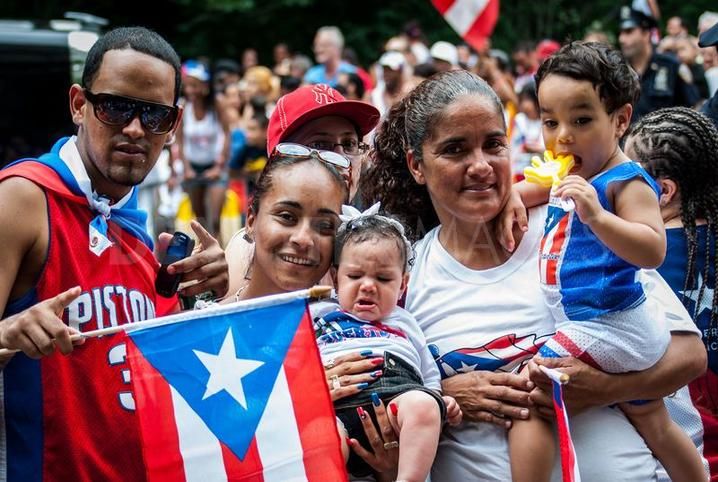 Puerto Rico has its own unique culture and traditions which are highly accepted and executed by the people residing here. Ranging from food, forms of music and dance, sports, annual celebrations, festivals and everything else, Puerto Rico has a calendar of its own. This island is pretty rich in history and ancient cultural influences.
Puerto Rico has its own unique culture and traditions which are highly accepted and executed by the people residing here. Ranging from food, forms of music and dance, sports, annual celebrations, festivals and everything else, Puerto Rico has a calendar of its own. This island is pretty rich in history and ancient cultural influences.
History of Puerto Rico
Source
Broadly, the culture of Puerto Rico is a combination of Taino, Spanish, and African cultures. The Taino community people were among the first ones to settle in Puerto Rico. Even after Spanish people arrived, they tended to marry Taino Indian women in order to fulfil their motive of populating the country. Following both of these, there were African slaves imported here, followed by Chinese immigrants, Italians, French, German, and even Lebanese people. Even American people joined the population after Puerto Rico became a colony of the United States in 1898.
Culture of Puerto Rico: Music and Dance
Source
With Caribbean influences, Puerto Rican music involves the use of many ancient musical instruments even today making it stand out from the rest. Instruments like mayohuacan (wooden slit drum), guiro (made up of hollowed gourd), cuatro (guitar with 10 strings) and Tambours (made of hollowed tree trunks and animal skin) form the composition of majority of Puerto Rican music.
Instruments like mayohuacan (wooden slit drum), guiro (made up of hollowed gourd), cuatro (guitar with 10 strings) and Tambours (made of hollowed tree trunks and animal skin) form the composition of majority of Puerto Rican music.
As a result of using percussion instruments in parallel to the stringed instruments while composing music, Salsa comes out to be the most preferred genre of music in Puerto Rico.
Source
Dance forms in Puerto Rico are majorly a gift from ancient Taino, Spanish and West African communities. Puerto Ricans involve admirable costumes for performing their dance forms like long, flowing skirts for women and large hats and sashes for men to complement their dance partners. Bomba is one of the most popular dance forms in Puerto Rican culture. It was said to have originated at ancient sugar cane fields by the slaves as a medium to express their frustration.
Culture of Puerto Rico: Holidays
Source
Puerto Rican culture is full of celebrations.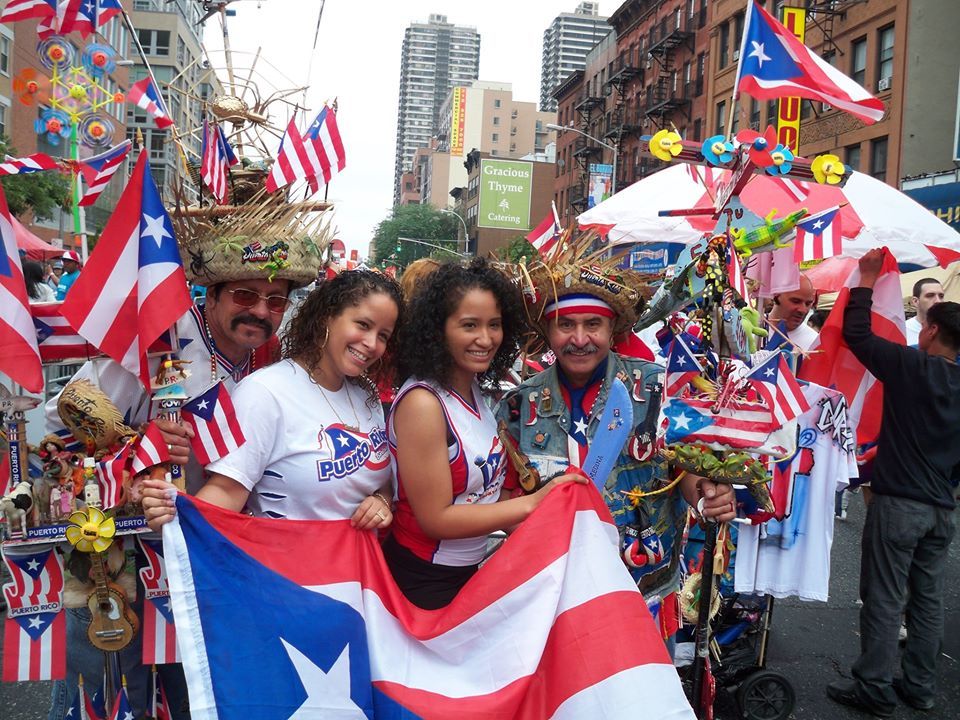 With the longest holiday season all around the world, Puerto Rico has 19 official holidays on its calendar. The Christmas season known as La Navidad brings in people singing Christmas carols as a surprise by gathering around people’s homes. It extends up to mid January.
With the longest holiday season all around the world, Puerto Rico has 19 official holidays on its calendar. The Christmas season known as La Navidad brings in people singing Christmas carols as a surprise by gathering around people’s homes. It extends up to mid January.
Apart from long Christmas celebrations, they also have Three Kings Day, celebrated on January 6 every year. It is celebrated in memory of the Wise Men who were said to have visited after Jesus was born. It involves more than 25,000 people as a part of the celebration for this particular day. Many of the festivals in Puerto Rican culture are celebrated via parades with colourful puppets, floats, food, dancing and music.
Sports Culture in Puerto Rico
Source
Baseball is considered the most popular sport all over Puerto Rico. Said to have originated from American and Cuban communities, it was adopted in Puerto Rican culture in 1897 for the first time. The popularity of baseball spread like wildfire throughout Puerto Rico spread after the American Baseball Club was beaten by 32 to 18. It was adapted as a sports activity in schools in Puerto Rico after this. Notable players like Roberto Clemente and Carlos Beltran have encouraged the importance and existence of baseball as a part of Puerto Rican culture.
It was adapted as a sports activity in schools in Puerto Rico after this. Notable players like Roberto Clemente and Carlos Beltran have encouraged the importance and existence of baseball as a part of Puerto Rican culture.
Religion and Culture in Puerto Rico
Source
Ponce de Leon was the first one to introduce Roman Catholic Faith among Puerto Rican people. Consequently, Catholicism is the religion dominating Puerto Rican culture even today. People here treat Christianity as very close to their hearts. More than 75% of the total Puerto Rican population is either Catholic or has strong connections abiding by it.
Traditions in Puerto Rico
Source
The world famous Three Kings Day parades in January in Puerto Rico constitute the biggest part of this culture. Apart from it other traditions followed here include: clapping when a plane touches the Island and drinking the local coquito in vacations. It is a coconut-based drink that is extremely sweet and looks similar to that of eggnog.
Art in Puerto Rico
Source
Puerto Rico showcases murals and art museums throughout its streets. Considered to be the best medium to describe Puerto Rican history, art constitutes a very important aspect of Puerto Rican culture. It has two major and world famous art museums named as: The Museum of Art of Puerto Rico (located in Santurce) and the Puerto Rico Contemporary Museum which definitely top the wish lists of the visitors.
Taking back a piece of local artwork, whether in the form of a painting or a hand-carved craft can prove to be the best takeaway as a memory from our trip to Puerto Rico. Contemporary, classic, urban or any other style of art, Puerto Rico has inspirational art pieces for all of them. Reflecting its Caribbean culture, street art trend is very popular all over the island.
Annual Festivals in Puerto Rico
Source
A festival or one or the other celebration takes place in Puerto Rico almost every weekend. Festivals here are very colorful and Puerto Rican people leave no stones unturned to make these loud and grand. Puerto Rican music shows, amusement rides, grand parades all over the streets, and delicious speciality food, all constitute the celebration of each and every festival here. Following the Catholic beliefs, celebrations stretch from mid-weeks till the weekend’s most of the time. Enjoying a Puerto Rican festival proves to be a great way to experience local culture for the visitors. Some of the most famous and exclusively Puerto Rican festivals are listed below:
Puerto Rican music shows, amusement rides, grand parades all over the streets, and delicious speciality food, all constitute the celebration of each and every festival here. Following the Catholic beliefs, celebrations stretch from mid-weeks till the weekend’s most of the time. Enjoying a Puerto Rican festival proves to be a great way to experience local culture for the visitors. Some of the most famous and exclusively Puerto Rican festivals are listed below:
1. Fiestas de la Calle San Sebastián
Source
Considered as the unofficial closure ceremony of the holiday season, this festival is one of the most predictable parties of Puerto Rico. It takes place from Wednesday evening till Sunday afternoon in San Juan. Stages are all set for artists for live music, dance, and circus performances.
When: Third weekend of January
Where: Old San Juan
2. Festival de la Novilla
Source
San Sebastián is a not so well-known rural town to the west of Puerto Rico. Usually celebrated on a Sunday, visitors can experience everything from folk music to salsa. A cow is embellished with a crown of flowers and a parade follows it throughout the town. This particular festival always closes with a concert of traditional music.
Usually celebrated on a Sunday, visitors can experience everything from folk music to salsa. A cow is embellished with a crown of flowers and a parade follows it throughout the town. This particular festival always closes with a concert of traditional music.
When: Third weekend of January
Where: San Sebastian
3. Fiesta de los Reyes Magos
Source
As per the Catholic beliefs January 6th was the day when the Three Wise Men visited baby Jesus for the first time. To celebrate this occasion, Puerto Rico experiences town festivals and grand parades with local people and actors dressed as the Three Wise Men and delivering gifts to the children. Two of the most famous festivals are Fiesta de Reyes Juanadina in Juana Díaz and Fiesta de Reyes Isabelinos in Isabela to celebrate the day in the best possible manner.
When: January 6
Where: Juana Diaz, Isabela
4. Festival de Santiago Apóstol
Source
Vejigante is a popular local folk character dressed in a colourful mask and multicolor jumpsuit. The masks are made of coconut and driftwood. During this festival a very lively parade can be witnessed across the town where battles between the vejigantes and the Spanish knights take place. These battles reflect the contradictions in the forces of good and evil. Bomba music can be widely enjoyed by the visitors in this festival.
The masks are made of coconut and driftwood. During this festival a very lively parade can be witnessed across the town where battles between the vejigantes and the Spanish knights take place. These battles reflect the contradictions in the forces of good and evil. Bomba music can be widely enjoyed by the visitors in this festival.
When: Last weekend of July
Where: Loiza
5. Festival Nacional Indígena
Source
This festival celebrates the significance of Taíno culture and traditions in Puerto Rico. Though, the Taíno community was overtaken by the Spanish people but their influence can be felt in Puerto Rican culture even today. Jayuya is such a place that captivates the highest peak in Puerto Rico along with the best coffee plantations on the island and a hot air balloon.
When: End of November
Where: Jayuya
Getting to know such rich and diversified culture of Puerto Rico is absolutely not enough unless you experience it in person. So what are you waiting for, book your tickets today and witness the admiring culture of Puerto Rico.
So what are you waiting for, book your tickets today and witness the admiring culture of Puerto Rico.
families, lifestyle, impact of immigration
The influence of North American living standards on the Puerto Rican family began at the end of the 19 immediately after the occupation of the island by the United States. Given the accelerated pace of Americanization of Puerto Rico, one could assume that by the time of mass emigration to the mainland, the island population had already largely lost those characteristic features of family life that are an integral part of Latin American culture in general. However, the transformation of family traditions in Puerto Rico in the XX century. – the process is very ambiguous, going at different levels with unequal speed and far from the same direction. Under the conditions of immigration, the evolution of the family as an ethno-cultural organism is especially complicated. The pressure of the norms of life offered by American reality is largely neutralized by such factors as the social and ethno-racial isolation of Puerto Ricans in the United States; the bilateral nature of emigration, which prevents the final rupture of immigrants with their homeland, its culture and traditions; the polarity of the traditions of the Hispanic and the so-called Middle American family.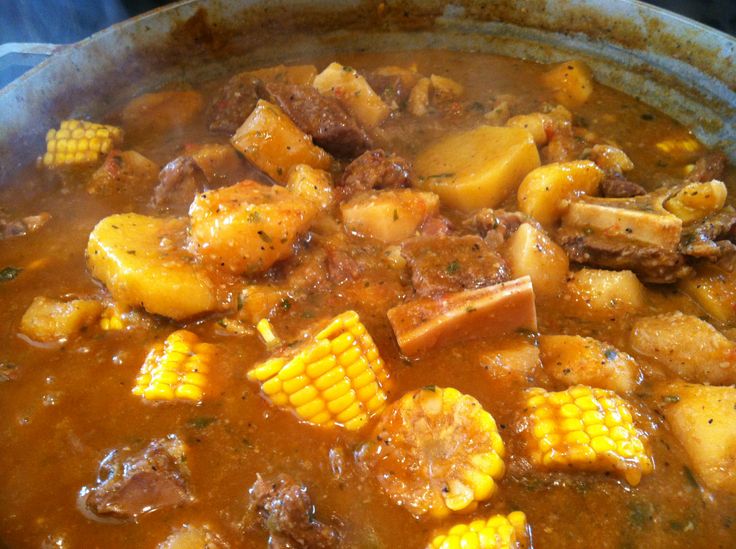 What happens to the Puerto Rican family in this situation? What are the main trends in its development? nine0003
What happens to the Puerto Rican family in this situation? What are the main trends in its development? nine0003
Contents
- 1. Living conditions of a Puerto Rican family in the USA
- 2. Housing conditions of Puerto Ricans in the USA
- 3. Children and fertility
- 4. Forms of family organization
- 5. Consensual marriage: its causes and consequences
- 6. Puerto Rican Divorce USA
Living conditions of a Puerto Rican family in the USA
The first thing to mention is the living conditions of a Puerto Rican family on the mainland. Despite the fact that most Puerto Ricans come to the mainland from the city, they can only relatively be called city dwellers. The socio-economic changes that began on the island after the war displaced the huge masses of the rural population, which, quickly overflowing the country’s industrial enterprises, rushed on, using the city only as a transit point for moving to the mainland. In the United States, the habitat of immigrants is becoming qualitatively different – a modern giant city with a highly developed industry. According to official US statistics on 1970, 98.4% of all Puerto Rican immigrant families lived in New York City. By 1980, this figure had decreased, but not significantly (94.5%), mainly due to families who moved to the suburbs.
In the United States, the habitat of immigrants is becoming qualitatively different – a modern giant city with a highly developed industry. According to official US statistics on 1970, 98.4% of all Puerto Rican immigrant families lived in New York City. By 1980, this figure had decreased, but not significantly (94.5%), mainly due to families who moved to the suburbs.
Based on basic social indicators, the families of Puerto Rican immigrants should be classified as the lowest strata of the city’s population, and over time the situation only worsens. Thus, if in 1970 there were 20.9% of Puerto Rican families, by 1982 there were already 42.4% of them (with a poverty level of about 10 thousand dollars). For comparison, we can say that in the same 1982, 25.2% of families were below the official poverty level among the US population as a whole, and among the largest group of the Mexican Hispanic minority of the country, 24.1% of families. Only 15.2% of Puerto Rican families in the United States can be attributed to the middle strata of the population, whose income in 1982 was 25 thousand dollars a year, i.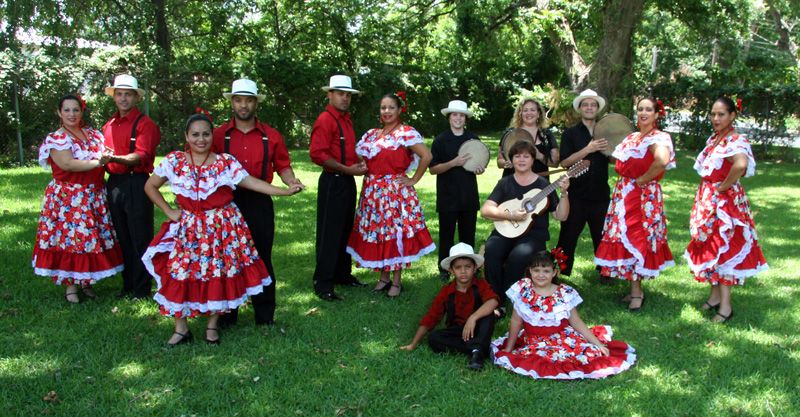 e. was in line with the American average. nine0003
e. was in line with the American average. nine0003
Housing conditions of Puerto Ricans in the USA
The picture of housing conditions of Puerto Ricans is no less expressive. Settlers from the island, as a rule, settled with their relatives and friends. It was almost impossible to rent an apartment anywhere else, especially where the white population predominated. In photographs published in American illustrated publications, houses in the Puerto Rican neighborhoods of New York, surrounded by piles of rubbish that had not been removed for a long time, with peeling all over the facade walls, without a hint of green spaces, look extremely shabby. Some Puerto Ricans settled in council houses, others rented from private landlords. The latter, taking advantage of the plight of immigrants, divided one apartment into separate rooms and rented each at an exorbitant price, furnishing it with furniture prepared for disposal. According to official statistics, the apartment of a Puerto Rican family in New York at 1970 consisted of an average of 4. 2 rooms, but in fact these rooms were obtained by dividing a two- or even one-room apartment, and utility rooms were also used for useful space. The kitchen often served as a bathroom, and sleeping places were also arranged in the freed-up bathroom. In 1970, 75.5% of Puerto Rican families in New York did not have the necessary amenities: running water, central heating, baths, and so on. 14.2% of families had their own housing.
2 rooms, but in fact these rooms were obtained by dividing a two- or even one-room apartment, and utility rooms were also used for useful space. The kitchen often served as a bathroom, and sleeping places were also arranged in the freed-up bathroom. In 1970, 75.5% of Puerto Rican families in New York did not have the necessary amenities: running water, central heating, baths, and so on. 14.2% of families had their own housing.
The average size of an immigrant family constituting one household at the end of the 1980s was 3.7 people. Characteristically, from 19In 1970, this indicator practically did not change, occupying an intermediate position between the average American (3.3) and Mexican (42.1). In 1950, the average size of the Puerto Rican urban family on the mainland and on the island was approximately the same – 4.6 people, but over the next 20 years the island figure decreased, but not to the same extent as the mainland, amounting to 1970. 4 ,2 persons.
Children and fertility
One of the most significant reasons for the sharp decline in the number of immigrant families is the decline in the birth rate. This is especially noticeable in intergenerational comparisons. Census 1970, among women of the first generation aged 25-34 there were 2812 births per 1000, and among women of the second generation – 2272 births per 1000. The proportion of Puerto Rican families in the United States with more than three children has noticeably decreased. If in 1970 such families accounted for 43.3% of all families of Puerto Rican immigrants with children, then in 1986 – only 31.6. Compare: average American families with more than three children in 1986 amounted to 25.4%, Mexican families in the USA – 58.1%. Thus, the large family – a characteristic feature of the cultural tradition of Puerto Ricans – partially lost ground, occupying the same intermediate position between the Middle American and Mexican families. nine0003
This is especially noticeable in intergenerational comparisons. Census 1970, among women of the first generation aged 25-34 there were 2812 births per 1000, and among women of the second generation – 2272 births per 1000. The proportion of Puerto Rican families in the United States with more than three children has noticeably decreased. If in 1970 such families accounted for 43.3% of all families of Puerto Rican immigrants with children, then in 1986 – only 31.6. Compare: average American families with more than three children in 1986 amounted to 25.4%, Mexican families in the USA – 58.1%. Thus, the large family – a characteristic feature of the cultural tradition of Puerto Ricans – partially lost ground, occupying the same intermediate position between the Middle American and Mexican families. nine0003
The decrease in the number of children in a Puerto Rican family, on the one hand, is caused by such social processes common to all modern urban populations as the participation of women in social production, raising their educational level, broadening their horizons, as well as needs that lie outside the traditional range of family concerns. But, on the other hand, such a factor as the unemployment of the breadwinner apparently plays an important role here. According to the 1969 statistics, among women of childbearing age whose husbands had a permanent job, 82.3% had children, and among women of the same group whose husbands did not have a permanent job, only 4.5%. In subsequent decades, the economic status of Puerto Rican families in the United States remained virtually unchanged (by 1982, 32% of them did not have a permanent income of the breadwinner during the year), so the trend towards a decrease in her reproductive attitudes, depending on such a factor as the unemployment of the breadwinner, apparently continues.
But, on the other hand, such a factor as the unemployment of the breadwinner apparently plays an important role here. According to the 1969 statistics, among women of childbearing age whose husbands had a permanent job, 82.3% had children, and among women of the same group whose husbands did not have a permanent job, only 4.5%. In subsequent decades, the economic status of Puerto Rican families in the United States remained virtually unchanged (by 1982, 32% of them did not have a permanent income of the breadwinner during the year), so the trend towards a decrease in her reproductive attitudes, depending on such a factor as the unemployment of the breadwinner, apparently continues.
Another aspect of the problem is also important. In 1969, the childbearing rate among Puerto Rican married women in social production was not only lower than, say, women of the same group among other Hispanic minorities, but even lower than the working married women of the entire US population as a whole.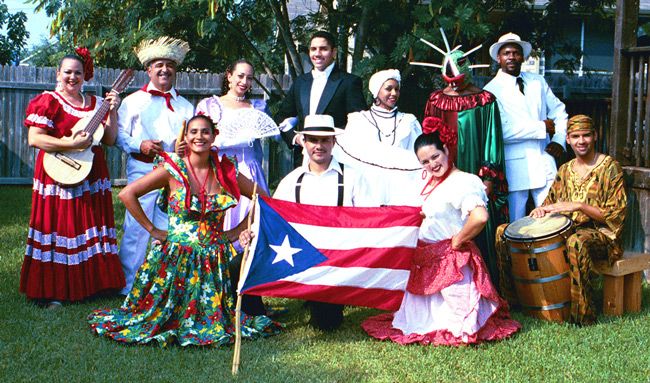 This fact, noted among other immigrant groups (and not only in the USA), is still the subject of discussion in ethno-demographic science, but a satisfactory explanation has not yet been given to it. Based on the material at our disposal, we can assume that the cause should also be sought in the field of psychology of immigrant women, which will be discussed in more detail below.
This fact, noted among other immigrant groups (and not only in the USA), is still the subject of discussion in ethno-demographic science, but a satisfactory explanation has not yet been given to it. Based on the material at our disposal, we can assume that the cause should also be sought in the field of psychology of immigrant women, which will be discussed in more detail below.
nine0003
Forms of family organization
Forms of family organization of Puerto Rican immigrants range from the simplest (married couple, parents with minor children) to very complex, often combining vertical and horizontal types of relationship. It must be said, however, that complex family forms have never been the norm in Puerto Rican culture. Their various types and subtypes were quite common among the peasants, but existed only until the newly formed couple (or couples) had enough money to buy a piece of land and a house. The small family was the norm, the ideal of family organization. nine0003
The joint residence of immigrants who are related to various degrees under one roof is also of a forced, temporary nature. Such a family does not represent a single entity in the economic sense. Settlers (even if they are the owner’s brother’s family) usually pay for housing to the owner himself and enjoy a certain autonomy in everyday life. Many families constantly rent out part of their living space, since the payment for it is a very significant part of their budget. As for the simple form of the family organization of Puerto Rican immigrants (or small family), it has several types, among which the matrifocal family occupies a special place. Let us make a reservation, by the way, that the matrifocal family is also very characteristic of complex forms of Puerto Rican family organization. In most cases, this is a vertical relationship of kinship between female lines. The formation of this type of family bears a pronounced imprint of the continuity of intra-family attitudes. nine0003
Such a family does not represent a single entity in the economic sense. Settlers (even if they are the owner’s brother’s family) usually pay for housing to the owner himself and enjoy a certain autonomy in everyday life. Many families constantly rent out part of their living space, since the payment for it is a very significant part of their budget. As for the simple form of the family organization of Puerto Rican immigrants (or small family), it has several types, among which the matrifocal family occupies a special place. Let us make a reservation, by the way, that the matrifocal family is also very characteristic of complex forms of Puerto Rican family organization. In most cases, this is a vertical relationship of kinship between female lines. The formation of this type of family bears a pronounced imprint of the continuity of intra-family attitudes. nine0003
On the island, the matrifocal family is a rather enduring tradition, dating back to the days of plantation slavery and still widespread among agricultural workers in the sugarcane growing areas, as well as in the outskirts of the slums of large cities, ie. where the poor make up the bulk of the population. In the United States, the matrifocal family is a characteristic feature of Puerto Rican neighborhood life. Moreover, as the American researcher D. Fitzpatrick noted back in the mid-1970s, the growth rate of the number of matrifocal families among immigrants significantly exceeds the island ones. It is especially noteworthy that the number of such families is growing in the second generation of immigrants. From Fitzpatrick’s point of view, this trend was bound to become one of the determining factors in the future development of the Puerto Rican family. nine0003
where the poor make up the bulk of the population. In the United States, the matrifocal family is a characteristic feature of Puerto Rican neighborhood life. Moreover, as the American researcher D. Fitzpatrick noted back in the mid-1970s, the growth rate of the number of matrifocal families among immigrants significantly exceeds the island ones. It is especially noteworthy that the number of such families is growing in the second generation of immigrants. From Fitzpatrick’s point of view, this trend was bound to become one of the determining factors in the future development of the Puerto Rican family. nine0003
Indeed, in the commentary to the latest US census, among the estimates of the main trends in the development of the Hispanic minority family, the unprecedented growth of Puerto Rican matrifocal families in the country is mentioned first of all. In 1982, only 40% of children under 18 lived with two parents (compared, for example, with 76% of Mexicans), 54% – with one mother. In the same year, matrifocal families among Puerto Rican immigrants accounted for a total of 45%, more than 1. 5 times the rate at 1970 g. (26%).
5 times the rate at 1970 g. (26%).
Consensual marriage: its causes and consequences
The basic conditions for the emergence of matrifocal immigrant families remained in principle the same as on the island, namely, illegitimate pregnancy and consensual marriage, which has always been less stable than ecclesiastical or civil marriage. With regard to the former, it can be said that out-of-wedlock pregnancies, which have long become commonplace in Puerto Rican cities, have not met with any social or cultural opposition on the mainland. Rather, on the contrary: the growing percentage of early extramarital pregnancies among the white population of the United States, whose behavior patterns are perceived as a standard by immigrants, only helped to consolidate such an attitude among Puerto Ricans. And the negative reaction of a mother living in Elbarrio to such news as the upcoming birth of a teenage daughter is first of all caused, say, by the too black somatics of the latter’s partner, and only then by the very fact of her pregnancy. nineon the mainland becomes even more profitable. The reason is simple: a woman with children who does not have a husband receives an allowance in the United States (the so-called home allowance), which in amount often exceeds the earnings of a Puerto Rican immigrant (it is so low). And given the high unemployment rate among Puerto Rican men on the continent (in New York, for example, it is the highest even compared to other ethnic minorities and blacks), state benefits are often the only source of family subsistence. As a result, among Puerto Rican immigrants, cases of imitation of a matrifocal family are becoming frequent. In fact, the parents are in a consensual marriage, deliberately not registering it, and on the days of the visits of the social security inspector, the man hides. To curb this practice, which is widespread among Puerto Ricans in New York, the inspector’s visits are usually scheduled around 5:00 am, when a man is most likely to be home. nine0003
nineon the mainland becomes even more profitable. The reason is simple: a woman with children who does not have a husband receives an allowance in the United States (the so-called home allowance), which in amount often exceeds the earnings of a Puerto Rican immigrant (it is so low). And given the high unemployment rate among Puerto Rican men on the continent (in New York, for example, it is the highest even compared to other ethnic minorities and blacks), state benefits are often the only source of family subsistence. As a result, among Puerto Rican immigrants, cases of imitation of a matrifocal family are becoming frequent. In fact, the parents are in a consensual marriage, deliberately not registering it, and on the days of the visits of the social security inspector, the man hides. To curb this practice, which is widespread among Puerto Ricans in New York, the inspector’s visits are usually scheduled around 5:00 am, when a man is most likely to be home. nine0003
It must be said, however, that as soon as an immigrant family acquires a more or less stable income that enables it to exist without benefits, a legal, preferably Catholic marriage is always preferred to consensual marriage. This is understandable, because the success of an immigrant’s entry into the structure of American society is impossible without the adoption of the charter of the latter. And public opinion in the United States in relation to long-term consensual unions is much tougher than on the island. Puerto Rican children in public school, for example, are ashamed of their unregistered parents, as they are subject to ridicule from peers and unfriendly glances from teachers. Social pressure sometimes includes more direct sanctions against consensual marriages. So, for example, a child may not be taken to a prestigious school (and a boy or girl to college) only on the grounds that their parents – even wealthy people – have not officially registered their marriage. In other words, legalized marriage is one of the important conditions for the successful assimilation of Puerto Rican immigrants in the United States. nine0003
This is understandable, because the success of an immigrant’s entry into the structure of American society is impossible without the adoption of the charter of the latter. And public opinion in the United States in relation to long-term consensual unions is much tougher than on the island. Puerto Rican children in public school, for example, are ashamed of their unregistered parents, as they are subject to ridicule from peers and unfriendly glances from teachers. Social pressure sometimes includes more direct sanctions against consensual marriages. So, for example, a child may not be taken to a prestigious school (and a boy or girl to college) only on the grounds that their parents – even wealthy people – have not officially registered their marriage. In other words, legalized marriage is one of the important conditions for the successful assimilation of Puerto Rican immigrants in the United States. nine0003
Divorces among the Puerto Rican population USA
At the same time, among the latter, the divorce rate is unusually high. Thus, in 1982, there were 7.5 divorces per 1,000 Puerto Ricans in the United States. This is a lot, especially when you consider that the total divorce rate for the whole of the United States (one of the world leaders in this sense) was 6.315. Most of the dissolution of marriages among Puerto Rican immigrants, as practically all over the world, occurs at the initiative of women. Something else is characteristic: the intensity of divorces among women is much higher than among men. Moreover, this gap is increasing from year to year. For example, at 1970, the proportion of divorced among Puerto Rican men was 2.0%, and among women – 5.3%, by 1979 this proportion among men remained practically unchanged (1.9%), and among women it reached 8.4%. Realizing that the elucidation of the causes of this phenomenon is the subject of special sociological research, we note, nevertheless, that the ethnopsychological side of the issue is also of no small importance, i.e. a change in the traditional value system of intra-family relations between men and women, which will be discussed in more detail below.
Thus, in 1982, there were 7.5 divorces per 1,000 Puerto Ricans in the United States. This is a lot, especially when you consider that the total divorce rate for the whole of the United States (one of the world leaders in this sense) was 6.315. Most of the dissolution of marriages among Puerto Rican immigrants, as practically all over the world, occurs at the initiative of women. Something else is characteristic: the intensity of divorces among women is much higher than among men. Moreover, this gap is increasing from year to year. For example, at 1970, the proportion of divorced among Puerto Rican men was 2.0%, and among women – 5.3%, by 1979 this proportion among men remained practically unchanged (1.9%), and among women it reached 8.4%. Realizing that the elucidation of the causes of this phenomenon is the subject of special sociological research, we note, nevertheless, that the ethnopsychological side of the issue is also of no small importance, i.e. a change in the traditional value system of intra-family relations between men and women, which will be discussed in more detail below.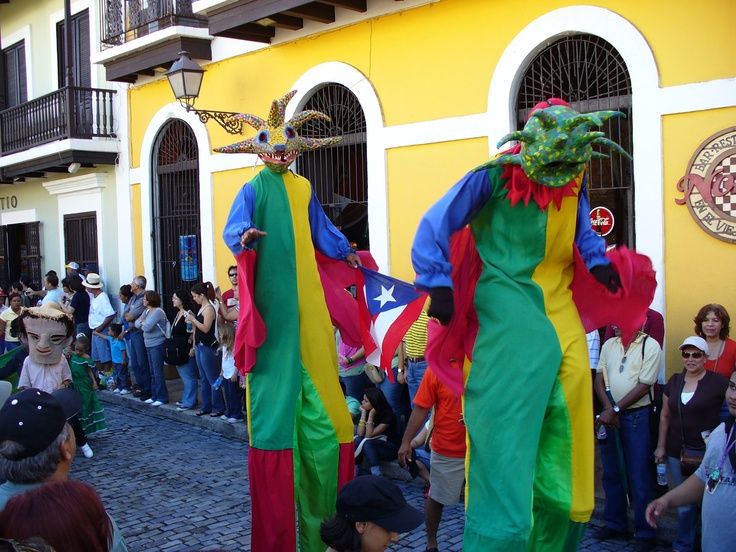 nine0003
nine0003
One way or another, the increase in the number of divorces is becoming another condition for the increase in matrifocal families among Puerto Rican immigrants, the significance of which is becoming more and more significant. The instability of marriage unions entails the conclusion of remarriages. It must be said that this process proceeds under the noticeable influence of a model of marital behavior that is widespread in the United States and is called sequential polygamy (i.e., the successive change of a marriage partner).
The remarried family, which contains not only the children of the current spouses but also children from their previous unions or union, can be considered a special type of Puerto Rican family. It is also widespread on the island: the presence of children in the intended marriage partner has never been an obstacle for Puerto Ricans in marriage, especially consensual marriage. The criterion for distinguishing this type of family, in our opinion, is the specificity of intra-family relations, caused by the lack of consanguinity of one of the parents with adopted children.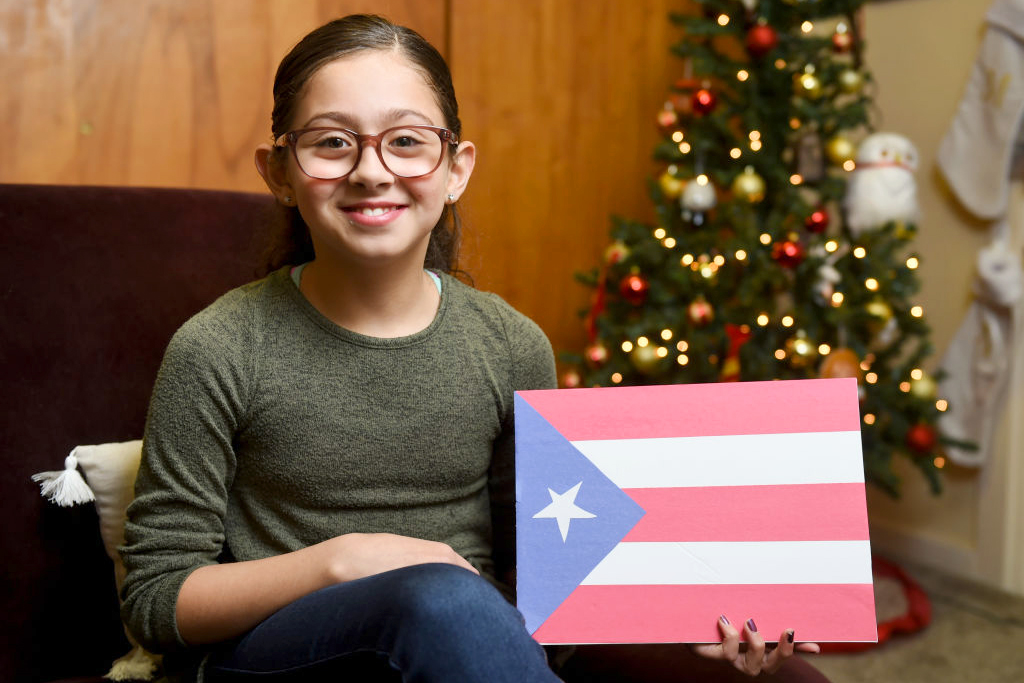 In relation to Puerto Ricans, this fact is of no small importance, especially if the “variable” parent is the father (the most common option). The machismo complex that determines the behavior of a man prevents the latter from treating the daughters of his new wife only as a father. As a result, there are frequent cases of his cohabitation with his stepdaughter, which does not exclude caring for her as a daughter. The mother’s relationship with adopted children of the opposite sex also bears the imprint of sexual tension. Although, it must be said, this variant of this type of family is much less common, for the reason that children usually stay with their mother when creating a new family. Their transfer to the new family of the father occurs only if the mother herself is not yet married and she has nothing to support the children. The attitude of a stepmother or stepfather with children of the same sex, as a rule, is rather cool, often simply hostile. nine0003
In relation to Puerto Ricans, this fact is of no small importance, especially if the “variable” parent is the father (the most common option). The machismo complex that determines the behavior of a man prevents the latter from treating the daughters of his new wife only as a father. As a result, there are frequent cases of his cohabitation with his stepdaughter, which does not exclude caring for her as a daughter. The mother’s relationship with adopted children of the opposite sex also bears the imprint of sexual tension. Although, it must be said, this variant of this type of family is much less common, for the reason that children usually stay with their mother when creating a new family. Their transfer to the new family of the father occurs only if the mother herself is not yet married and she has nothing to support the children. The attitude of a stepmother or stepfather with children of the same sex, as a rule, is rather cool, often simply hostile. nine0003
In general, it must be said that all the named options for the relationship of parents and children in this kind of Puerto Rican family are noticeably different from the American one, where a new marriage initially involves treating the adopted child as one’s own. There is even a tendency in American sociology to shift the center of gravity of caring for children from relatives to foster families. Such a formulation of the question, by the way, also has a negative side, since it complicates the position of the children themselves, sometimes forcibly drawn into a new structure of family ties for them. This problem has become increasingly acute in the United States in recent years. nine0003
There is even a tendency in American sociology to shift the center of gravity of caring for children from relatives to foster families. Such a formulation of the question, by the way, also has a negative side, since it complicates the position of the children themselves, sometimes forcibly drawn into a new structure of family ties for them. This problem has become increasingly acute in the United States in recent years. nine0003
Is your Latina wedding day coming up? Then, here are the most popular Latin American wedding traditions you need to know about!
The world is beautiful, because in every corner of the globe we can find a huge number of cuisines of all peoples of the world, folklore, culture and traditions, favorite things from Latin America! And many popular Latin American wedding traditions are still present in many weddings, and this is unlikely to ever change! nine0003
In Central and South America, in the Caribbean, all unique and touching traditions have not yet been forgotten and are still used today. So it’s important for us to figure out how to apply these cultures to a Hispanic wedding!
So it’s important for us to figure out how to apply these cultures to a Hispanic wedding!
So while you can find love in any part of the world, now we are going to tell you about the most important traditions that are popular in Latin American weddings! And you will be able to know all the details for your special day. So, let’s begin! nine0003 Photo by Aspen Jeanné Photography
Coins are very important
Coins have become one of the most popular traditions of Latin American weddings , as during the ceremony, the groom gives the bride 13 gold coins , which symbolizes prosperity and good luck. This tradition is observed in Venezuela, Argentina, Colombia, Bolivia and Panama. Meanwhile, in Mexico, Honduras, and Guatemala, coins symbolize a man’s responsibility to be the “protector” of the home. However, this tradition is changing, and the second meaning is losing its popularity. nine0003
In addition, women in Colombia usually put coins in their shoes as they believe this will ensure a happy and successful marriage.
Champagne rings
Luck is the most important element of a Latin American wedding, and therefore wedding rings are usually placed in champagne as a symbol of the endless union between spouses. The first drink and the first toast of celebration must begin with this drink.
Rosary, crown or gold cord
These items are very popular as they also symbolize the happy marriage of spouses. It is so traditional that in all Latin American countries the bride and groom always wear one of these items. Pretty original!
Photo by Iluminen
Ribbon tied around the bride’s leg
One of the most exciting parts of a wedding is when the bride exposes her leg and the husband has to remove the ribbon from her leg. This is very often practiced not only in Latin American weddings, but also in other weddings among others nations of the world!
Money dance with a Cuban bride
The money dance is a popular tradition at Latin American weddings, although this is somewhat controversial. In Cuba, if someone wants to dance with the newlyweds, they must attach money to the bride’s dress or put it in the groom’s suit.
In Cuba, if someone wants to dance with the newlyweds, they must attach money to the bride’s dress or put it in the groom’s suit.
This usually happens when newlyweds open the dance floor with their first dance. Guests approach them and invest in the clothes of the bride and groom. nine0003
Guatemalan bell
In Guatemala, on the wedding day, a white bell is placed at the entrance to the hall, and when the bride and groom leave after the ceremony, the bride’s mother rings the bell to signal to the guests when to throw rice, flour and other grains , which are considered a symbol of good luck.
Photo by Aspen Jeanné Photography
Peruvian cake
In Peru, there is a thread baked inside the cake, but only one of them has a ring tied to it! It is believed that the guest who receives this ring will be the next to be married. nine0003
Mexican rope
During the ceremony, the guests are instructed to tie the bride and groom with a rope that usually binds their hands, which symbolizes the strong bond of the couple.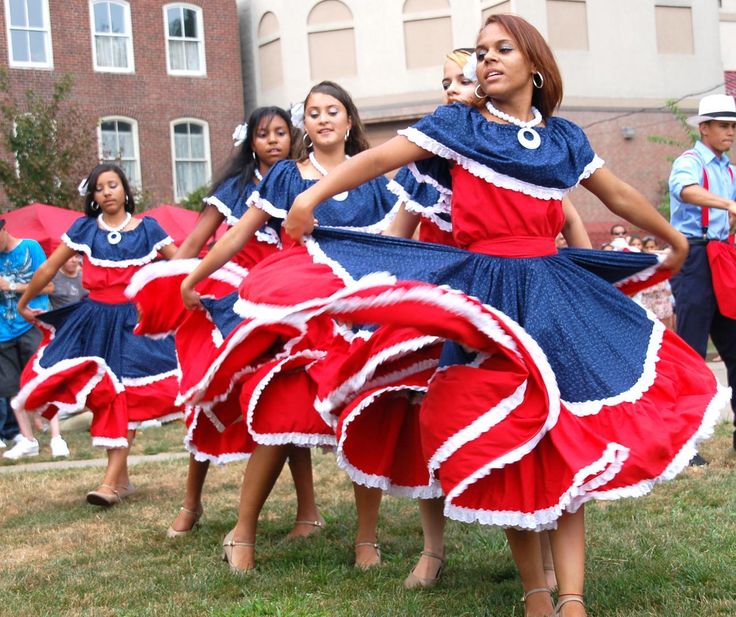 This popular tradition was brought to Mexico from Europe and is present in almost all weddings.
This popular tradition was brought to Mexico from Europe and is present in almost all weddings.
Chilean Ring Exchange
The idea behind the ring exchange at Chilean weddings is to move the wedding rings from right to left. In this country, the bride and groom usually wear their wedding rings on their right hand, and then move them to their left. nine0003 Photo by Carol Oliva Photography
Puerto Rican “capias”
Puerto Rican “capias” are thin belts, usually made of satin, which are usually worn around the waist. In turn, they are decorated with precious stones, feathers, and other elements. These belts usually bear the wedding date of the bride and groom, and the task of the bride is to tie these “capias” around the waist of each guest.
In addition, they can be decorated with anything, choose any theme. This is a very beautiful and original tradition! nine0003
Puerto Rican fan in front of the bride’s bouquet
In Puerto Rico for many years, women for many years could not leave the house without fans, which were considered part of their daily clothes.